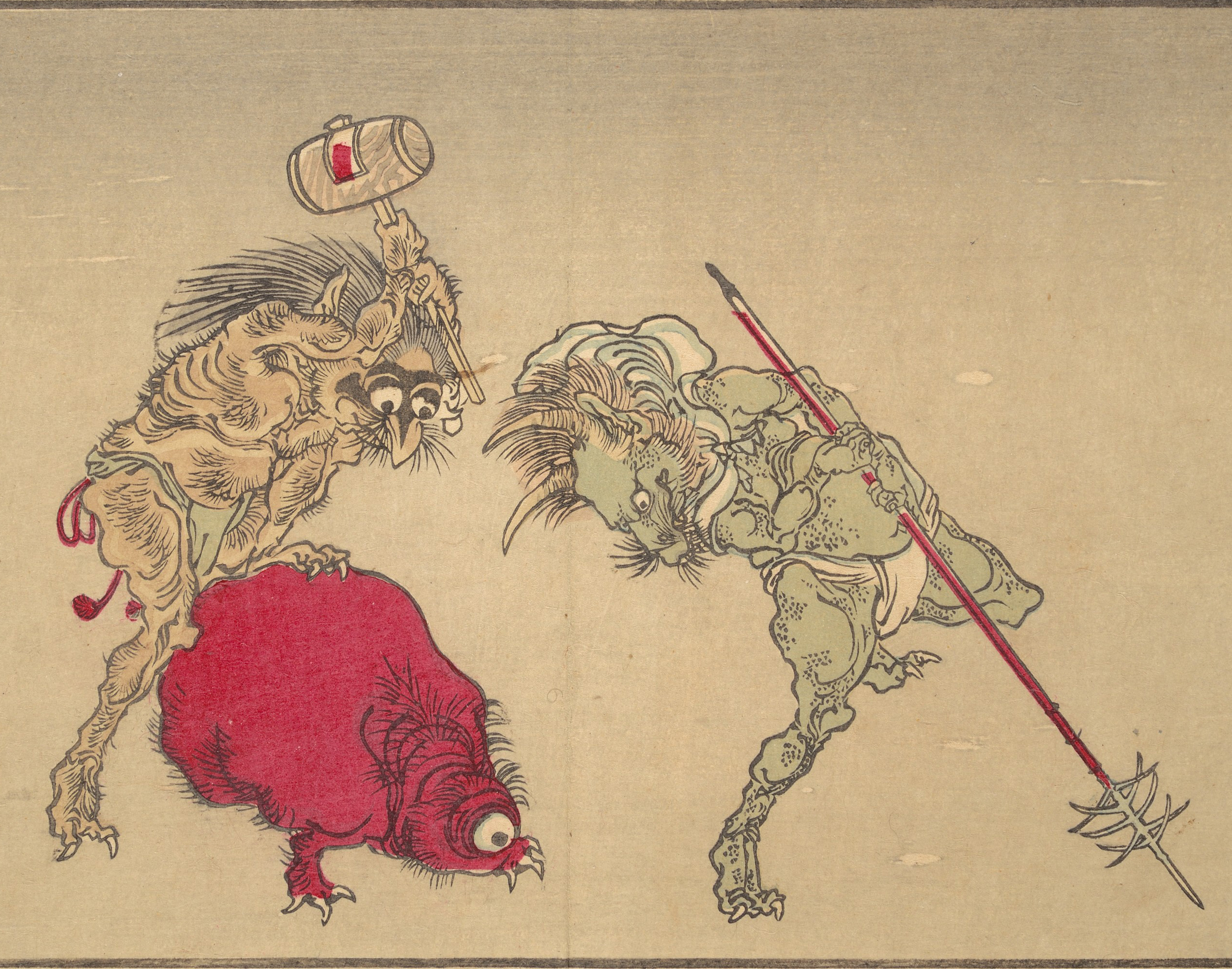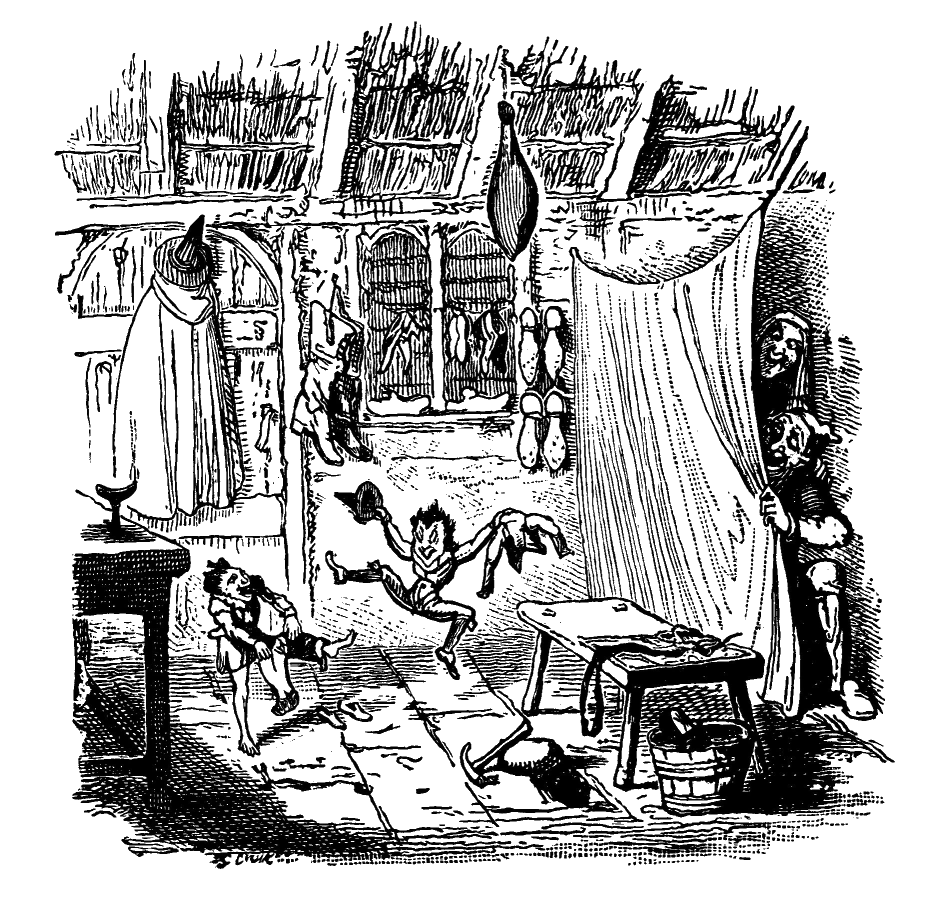|
Yeii
__NOTOC__ The yeii or yei ( nv, or ) are spirit deities of the Navajo people. The most benevolent of such beings are the Diyin Diné'e or Holy People who are associated with the forces of nature. Yei bichei (Yébîchai), or "maternal grandfather of the yei", is another name of Talking God who often speaks on behalf of the other Holy People. (He, along with Growling God, Black God, and Water Sprinkler, were the first four Holy People encountered by the Navajo.) He is invoked (along with eight other male yei) in the "Night Chant" or "Nightway" (Navajo: or Kléjê Hatál), sometimes simply called "Yei bichei," a nine-night ceremony in which masked dancers personify the gods. A rainbow yei, sometimes considered an aspect of the rain-god Water Sprinkler, is drawn around every sandpainting; his body curls around the south, west, and north sides to protect the painting from outside influences, and to protect the user from the power of the god depicted in the painting. He does no ... [...More Info...] [...Related Items...] OR: [Wikipedia] [Google] [Baidu] |
Navajo People
The Navajo (; British English: Navaho; nv, Diné or ') are a Native American people of the Southwestern United States. With more than 399,494 enrolled tribal members , the Navajo Nation is the largest federally recognized tribe in the United States; additionally, the Navajo Nation has the largest reservation in the country. The reservation straddles the Four Corners region and covers more than 27,325 square miles (70,000 square km) of land in Arizona, Utah, and New Mexico. The Navajo Reservation is slightly larger than the state of West Virginia. The Navajo language is spoken throughout the region, and most Navajos also speak English. The states with the largest Navajo populations are Arizona (140,263) and New Mexico (108,306). More than three-fourths of the enrolled Navajo population resides in these two states. [...More Info...] [...Related Items...] OR: [Wikipedia] [Google] [Baidu] |
Zuni People
The Zuni ( zun, A:shiwi; formerly spelled ''Zuñi'') are Native American Pueblo peoples native to the Zuni River valley. The Zuni are a Federally recognized tribe and most live in the Pueblo of Zuni on the Zuni River, a tributary of the Little Colorado River, in western New Mexico, United States. The Pueblo of Zuni is south of Gallup, New Mexico. The Zuni tribe lived in multi level adobe houses. In addition to the reservation, the tribe owns trust lands in Catron County, New Mexico, and Apache County, Arizona. The Zuni call their homeland ''Halona Idiwan’a ''or Middle Place. The word ''Zuni'' is believed to derive from the Western Keres language (Acoma) word ''sɨ̂‧ni'', or a cognate thereof. History Archaeology suggests that the Zuni have been farmers in their present location for 3,000 to 4,000 years. It is now thought that the Ancestral Zuni people have inhabited the Zuni River valley since the last millennium B.C., when they began using irrigation to farm maize o ... [...More Info...] [...Related Items...] OR: [Wikipedia] [Google] [Baidu] |
Diné Bahaneʼ
( nv, "Story of the People"), the Navajo creation myth, describes the prehistoric emergence of the Navajo as a part of the Navajo religious beliefs. It centers on the area known as the Dinétah, the traditional homeland of the Navajo, and forms the basis of the traditional Navajo way of life and ceremony. The basic outline of begins with the creation of the (Holy Wind) as the mists of lights which arose through the darkness to animate and bring purpose to the four (Holy People) in the different three lower worlds. This event happened before the Earth and the physical aspect of humans had come into existence, but the spiritual aspect of humans had. The Holy People then began journeying through the different worlds, learning important lessons in each one before moving on to the next. The fourth and final world is the world in which the Navajo live in now. The First or Dark World, , was small and centered on an island floating in the middle of four seas. The inhabitants of the ... [...More Info...] [...Related Items...] OR: [Wikipedia] [Google] [Baidu] |
Yōkai
are a class of supernatural entities and spirits in Japanese folklore. The word is composed of the kanji for "attractive; calamity" and "apparition; mystery; suspicious." are also referred to as , or . Despite often being translated as such, are not literally demons in the Western sense of the word, but are instead spirits and entities. Their behavior can range from malevolent or mischievous to benevolent to humans. often have animal features (such as the , depicted as appearing similar to a turtle, and the , commonly depicted with wings), but may also appear humanoid in appearance, such as the . Some resemble inanimate objects (such as the ), while others have no discernible shape. are typically described as having spiritual or supernatural abilities, with shapeshifting being the most common trait associated with them. that shapeshift are known as or . Japanese folklorists and historians explain as personifications of "supernatural or unaccountable phenomena to th ... [...More Info...] [...Related Items...] OR: [Wikipedia] [Google] [Baidu] |
Vættir
The vættir (Old Norse: ; singular vættr ) are spirits in Norse mythology. The term can be used to refer to the full cosmos of supernatural beings, including the álfar (elves), dvergar (dwarves), jötnar (giants), and gods (the Æsir and Vanir). Vættir can also refer more specifically to landvættir (, nature spirits), fjallvættir (, mountain spirits), sjóvættir (, sea spirits), skogvættir (, forest spirits), vatnavættir (, guardians of the specific waters), or húsvættir (, house spirits). Etymology The Old Norse term ''véttr'' , / ''vættr'' and its English cognate ''wight'' are descended from Proto-Germanic ''*wihtiz'' (thing, creature), from Proto-Indo-European ''*wekti-'' ("object, thing"). ''Vættr'' and ''wight'' normally refer to a supernatural being, especially landvættr (land spirit), but can refer to any creature. The Norwegian ''vette'' is used much in the same way as the Old Norse ''vættr'' as are the corresponding Swedish cognate ''vätte'' (diale ... [...More Info...] [...Related Items...] OR: [Wikipedia] [Google] [Baidu] |
Deities Of The Indigenous Peoples Of North America
A deity or god is a supernatural being who is considered divine or sacred. The ''Oxford Dictionary of English'' defines deity as a god or goddess, or anything revered as divine. C. Scott Littleton defines a deity as "a being with powers greater than those of ordinary humans, but who interacts with humans, positively or negatively, in ways that carry humans to new levels of consciousness, beyond the grounded preoccupations of ordinary life". Religions can be categorized by how many deities they worship. Monotheistic religions accept only one deity (predominantly referred to as "God"), whereas polytheistic religions accept multiple deities. Henotheistic religions accept one supreme deity without denying other deities, considering them as aspects of the same divine principle. Nontheistic religions deny any supreme eternal creator deity, but may accept a pantheon of deities which live, die and may be reborn like any other being. Although most monotheistic religions traditionally e ... [...More Info...] [...Related Items...] OR: [Wikipedia] [Google] [Baidu] |




